Using Castor OIl in Cosmetics and Soap
Origin and preparation of castor oil
Castor oil comes from the seeds of a tropical tree, mainly grown in Brazil, China, and India. In Estonia, castor trees are cultivated as ornamental plants, but the seeds often stay unripe due to the short warm season.
The colorful and highly poisonous seeds of the castor tree are enclosed in a three-part pod and contain ricin, one of the most toxic substances in the world. There is no antidote for a lethal dose. Fortunately, castor oil is free of ricin, as it remains in the press residue as an unstable compound and breaks down when processed with hot steam.
The oil is extracted by pressing the seeds. The resulting liquid is light in color and very viscous.
In addition to cosmetics, castor oil is used as a laxative in medicine, and due to its viscosity, it is widely used as a thickener and lubricant in both the pharmaceutical and manufacturing industries.
Fatty acid composition
• Ricinoleic acid 88%
• Linoleic acid 6%
• Oleic acid 4%
• Palmitic acid 1%
• Stearic acid 1%
The percentages are given as averages, they fluctuate slightly depending on the batch.
Vitamins
The amount of vitamin E naturally found in the oil is practically non-existent.
Castor oil in cosmetics
88% of castor oil is ricinoleic acid – an omega-9 fatty acid with anti-inflammatory, antimicrobial and antioxidant properties. Castor oil is well suited for use on inflamed facial skin, as the likelihood of clogging pores is low (the comedogenicity indicator on a 4-point scale is 0-1).
An important value of castor oil is its ability to attract and retain moisture. In this respect, castor oil is similar to honey and glycerin.
Castor oil is a valuable component in oil-in-water creams, making the composition thicker and giving cosmetic products better stability. This is especially evident in lip gloss, where the oil ensures long-lasting wear and a beautiful shine.
To make the simplest lip gloss, castor oil and mica can be mixed together. For a gloss with a slightly thicker consistency, beeswax is added. The recipe for the latter is extremely simple:
Lip gloss with castor oil and beeswax
You will need:
• 20 g castor oil
• 2 g beeswax
• 0.5 tsp mica
• plastic cup (5 ml)
• ca 200 ml melting bowl (glass or heat-resistant plastic)
• electronic kitchen scale
How to make:
1.Weigh the castor oil and beeswax into a melting bowl. Melt them in the microwave or in a water bath. This recipe also includes tips on best practices for melting.
NB! It is important that you heat the beeswax and castor oil together, because if you melt the wax separately, it will break when you add the castor oil later.
2. When the beeswax has melted, add the mica.
3. Mix the mixture until smooth and put it in a cup.
4. Ready! Use as needed.
Castor oil in hair care
There is a lot of information on the Internet, where castor oil is praised as a growth promoter for hair, eyebrows and eyelashes. However, scientific studies have not confirmed these claims and experiences.
Logically, the improved condition of the hair is probably related to the positive effect of castor oil on the scalp. Namely, an inflamed scalp restricts the blood supply to the hair follicle and prevents the flow of nutrients, which in turn inhibits hair growth. In addition, inflammation can also cause hair loss.
Using castor oil on the scalp helps to cleanse the follicle of bacterial infection, and the scalp massage that accompanies the application of the oil improves blood supply. Therefore, when caring for hair, it is important to pay enough attention to the scalp and massage it so that the oil can have maximum effect.
A hair oil mask helps to retain moisture in the hair, and the surface of the hair remains smoother and the hair looks shinier. Since castor oil itself is very viscous, it can be mixed with another base oil, such as olive oil (2 parts olive oil, 1 part castor oil). A few drops are enough for a massage, and for a more intense effect, the oil can be left on the head for a few hours after kneading.
Castor oil in soap
Ricinoleic acid, which is only found in castor oil, gives soap a persistent, dense and creamy lather. However, the consistency of the soap becomes sticky and soft when using a lot of castor oil.
To ensure pleasant lather, castor oil should be used together with coconut fat. It is enough if the proportion of castor oil in the soap fats is 5-10%. The proportion of other fatty acids: linoleic, oleic, palmitic and stearic acids in castor oil is small compared to other vegetable fats.
Castor oil also accelerates the saponification of the soap (the mixture becomes thick faster) and should be avoided when making soaps with intricate patterns.
Saponification value
• soapstone – 0.128
Related products
Castor Oil Cold Pressed
Castor Oil Organic 100 ml
Organic Castor Oil Cold Pressed
Related posts
 How to Create Cold Process Soap Recipes
How to Create Cold Process Soap Recipes




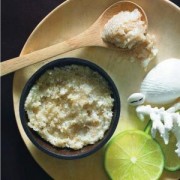

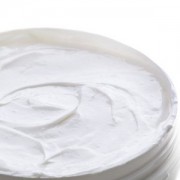

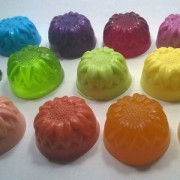



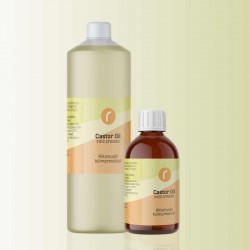
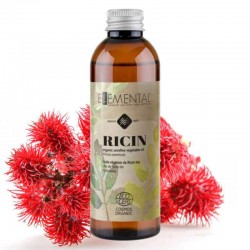
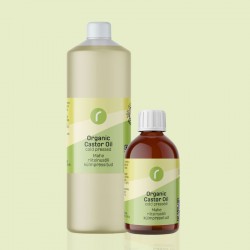
Leave a comment